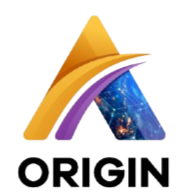The Challenge:
The manual process of tracking employee hours became increasingly cumbersome and error-prone as our organization expanded with remote teams and freelancers. Due to inefficiencies in existing methods, we experienced delays in payroll processing and project management. In order to solve these problems, we designed a web application tailored specifically for submitting, reviewing, and managing employee hours.
The Solution:
We built an all-inclusive web application that featured advanced features for seamless time management and tracking. By using modern web development trends, we developed a system that streamlines the entire process from submission to approval.
Tech Stack:
- Frontend: Using React.js, a powerful JavaScript library, we created an intuitive user interface that is dynamic and responsive.
- Backend: The backend infrastructure was developed using Node.js and Express.js, allowing complex business logic and data operations to be handled.
- Database: It was decided to use MongoDB because of its flexibility and scalability, which allowed user profiles, submitted hours, and related data to be stored and retrieved efficiently.
- Authentication: The Firebase Authentication system provides a secure and reliable authentication system, protecting sensitive user information and providing seamless user login.
- Notifications: Automated notifications were provided to users regarding the status of submitted hours and pending actions through integration with email services.
- Deployment: For automated testing and deployment, Heroku provided a seamless deployment process and CI/CD pipelines for continuous integration and continuous deployment.

Complexities and How We Triumphed Over Them:
- User Authentication: It was necessary to configure Firebase Authentication carefully to ensure compatibility with our application’s requirements. Firebase’s authentication APIs were utilized, as well as custom token generation to ensure user authentication was secure.
- Approval Workflow: The diverse organizational structures and approval hierarchies made it challenging to design a flexible approval workflow. Based on role-based permissions, we implemented a customizable workflow engine that allows administrators to define and modify approval routes.
- Data Storage: The use of MongoDB as our database requirement necessitated careful consideration of data modeling and indexing strategies to optimize performance and scalability. To manage complex data relationships efficiently, we used schema design patterns such as embedding and referencing.
- Accessibility and Security: A strict security policy and accessibility compliance were paramount. A thorough accessibility audit was conducted, and security best practices were implemented, including encryption, authentication, and protection against common vulnerabilities like Cross-Site Scripting (XSS) and Cross-Site Request Forgery (CSRF).

Key Features:
- User Authentication: With Firebase Authentication, users can sign up, login, and reset their passwords securely.
- Dashboard: Providing users with insights into their submitted hours, previous entries, and pending approvals through a dynamic dashboard interface.
- Submit Hours Form: User-customizable form that allows users to input detailed hour records, such as date, start date, end date, project/task details, and optional notes.
- Approval Workflow: With a configurable approval chain based on predefined organizational roles and permissions, users can submit and approve hours in an automated manner.
- Notifications: A system that sends automatic emails notifying users of the status of their submitted hours and any actions that need their attention.
- Reporting: A comprehensive reporting and analytics feature allows managers to keep track of employee hours by team, project, or individual, using charting libraries such as Chart.js or D3.js.
AI/Analytics Features:
- BI and Analytics:
- Visualization and monitoring of trends, productivity, progress, and even attrition with dashboards and reports.
- Predictive analytics allows hiring needs to be planned and targeted workers to be identified early.
- AI-Powered Tools:
- Provides a system for recommending training based on pre-screening, performance evaluations, and training recommendations.
- Chatbot:
- 24/7 virtual assistants address issues related to leave, payroll, HR policies, as well as other frequently asked questions by employees.
- The system simplifies routine tasks such as submitting leave applications and expense claims.
- Custom Workflows:
- Customized workflows for approvals based on roles and organizations.
- Employee Self-Service:
- It’s easy to navigate an employee engagement portal, where they can view their payslips, edit their personal information, and request leave.
Outcomes:
- Increased Efficiency: A simplified hour-tracking process, reduced manual errors, and improved operational efficiency were achieved with the application.
- Enhanced Transparency: Transparency and accountability were fostered within the organization by providing employees with access to their submitted hours and approval status.
- Time and Cost Savings: Streamlining the approval workflow and reporting process resulted in time and cost savings, allowing better allocation of resources.
- Scalability: As the organization grew, so did the application, and it was able to accommodate the growing number of users and volume of data due to its modular architecture and scalable database infrastructure.
By developing an employee hours tracking application, we were able to address our organization’s challenges and achieve greater efficiency, transparency, and scalability in managing employee hours as a result. The solution we developed and implemented was robust and met our organization’s diverse needs with meticulous design and implementation utilizing advanced web technologies.

